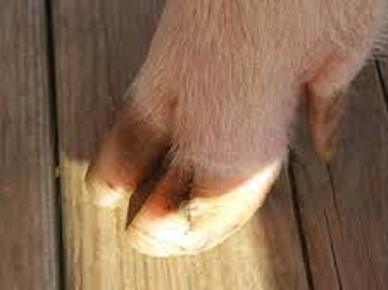THE PIGS HAVE ARRIVED! And here is why this is the most exciting pig year yet----
Two of these wee ladies will become long term residents on our little homestead!!
We will be keeping two girls, then soon purchasing a boar to start breeding and raising our own pigs. We will sell some of their piglets but also keep some for raising for meat.
Why are we raising our own?
The main reason is we are striving for higher quality meat. We put a lot of work, time and money into this yearly investment so it only makes sense to focus on the best end product possible. All pork is not created equal. Some pork is lean, some is more fat, some have darker meat, some have better hams, some make better bacon, some breeds have longer loins giving more cuts in that area.... the list goes on. (The same goes for cattle and their beef as more are probably familiar with. I myself was raised to love those Black Angus.)
Here's some pics of them before I go on-
The two girls we will be raising to become breeder sows are a purebred Hampshire and a purebred registered Mulefoot;
both heritage breeds. We will be breeding both to a purebred registered Mulefoot.
Hampshires are a very old breed of pig but very common still because of their many good qualities. They are a very muscular and possibly THE leanest pig breed in North America. Hampshires are known for excellent carcass quality, hardiness and the ability to forage for their food (a trait of most old breeds). The Hampshires are the ones with the white belt around their shoulders.
Mulefoots are also a very old breed and actually endangered, it is the rarest swine breed in America! They caught our eye as soon as we started researching them. Mulefoot's meat is dark, marbled very nicely and apparently very flavorful. It is a unique rosy red color and very tender (only rare heritage breed pigs have this type of pork, common pork we are used to is considered 'white meat' pork and fairly dull in flavor). In a blind taste test of 90 food connoisseurs, chefs and writers,
Mulefoot pork won top prize over 8 other heritage breeds and 1 commercial breed. Specifically they are known for their superior hams. In the 1900's they were THE premium ham breed. Mulefoots are extremely hardy, excellent foragers and highly disease resistant; once vaccines became a norm in farming this trait was no longer as important. Another factor that made them less appealing is their small litter sizes, averaging only 5-6 piglets compared to 11-13 piglets born to commercial sows. From my other research the demand for a larger size hog was another reason for their decline in popularity.
8 weeks old-
The name comes from their unique solid hoof, not split or cloven like regular pig's feet.
 |
| Cloven hoof |
This trait was to help protect their hooves from rot while living in moist areas.
As far as pork
FOR SALE --
- We currently have : Bacon, Italian sausage, Breakfast sausage, Bone-in chops and Ham steaks for sale. Message me for price if interested.
- We will be sending 3 of the current pigs (2 mulefoots and 1 hampshire) away in the fall. Their meat will be available for sale then but preorders are preferred. We do large portion shares, such a 1/2 pig, and piece by piece as well. Just FYI that large portion shares are flat rate per pound for all cuts and therefore cheaper.
- We will have piglets for sale from both the Hampshire female and Mulefoot female next spring. And of course we will continue to sell pork.
Enough selling for now. :)
---------------------------------------------------------------
References:
Blind Taste Test -
The Grit
Slow Food USA -
Ark of Taste
American Mulefoot Hog Association -
Gourmet Meat
